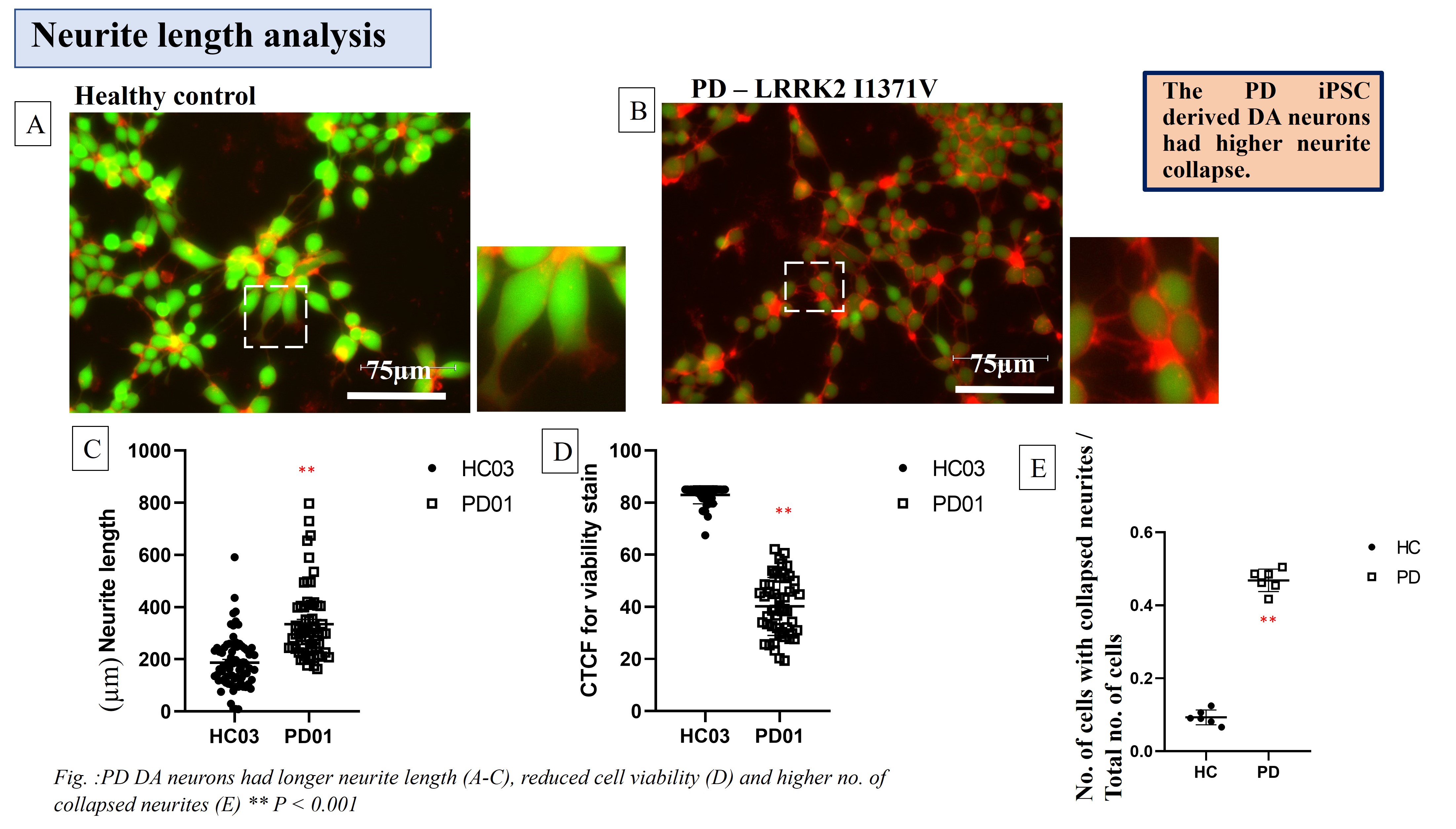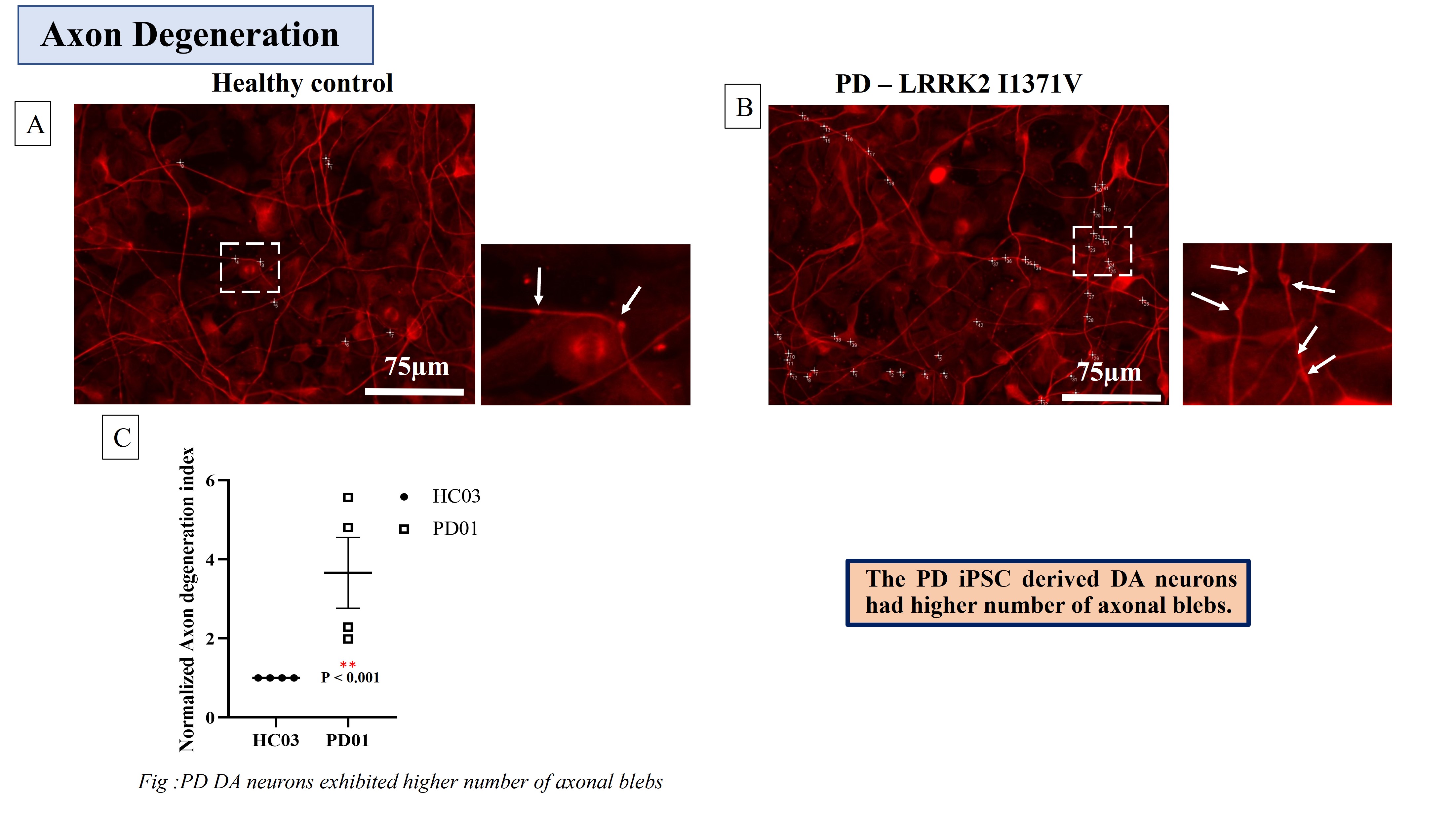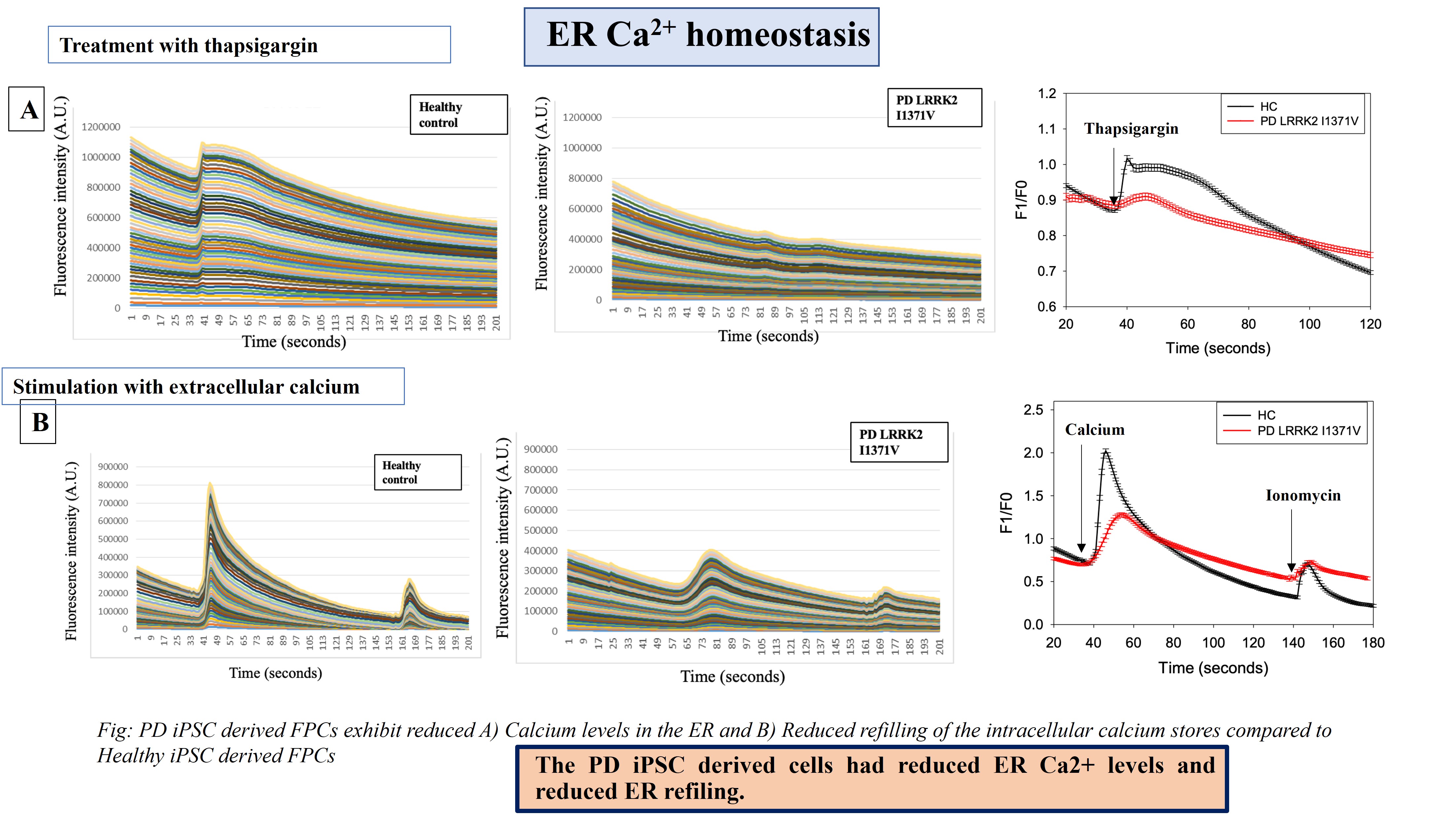Objective: To estimate pathogenicity of LRRK2 I1371V mutation in PD patient iPSC-derived DA-neurons & assess underlying disease mechanisms involving membrane fluidity, Ca2+ dysregulation, & Rab8A/Rab10 phosphorylation
Background: While G2019S variant, predominant in Caucasians, has been extensively studied, I1371V mutation found in East Asian PD patients lacks comprehensive investigation. Despite initial designation as non-pathogenic in HEK cells, emerging clinical data challenges this classification highlighting the need for more clinically relevant models. Differences in human and mouse LRRK2 stability, activity, mutation effects, & membrane lipid composition underscores necessity of human patient-derived cell platforms.
Method: Phenotypic & functional characterization of terminally differentiated DA-neurons from LRRK2 I1371V PD & Healthy control iPSCs were performed through FACS & live-cell fluorescence imaging. Auto- & substrate-phosphorylation were quantified through FACS & confocal imaging. Store-operated Ca2+ entry (SOCE) in DA neurons was measured using live-cell fluorescence imaging, & membrane fluidity was measured using the fluorescence probe TMA-DPH to assess membrane anisotropy. ER stress was measured through fluorescence imaging.
Results: Impairment in vesicular dopamine release & intracellular Ca2+ response was observed, with increased neurite collapse & axon degeneration in LRRK2 I1371V DAneurons. Significant increase in pRab8A/Rab8A, pRab10/Rab10, pLRRK2 S935/LRRK2, & pLRRK2S1292/LRRK2 was observed. Membrane fluidity was higher in DA neurons derived from LRRK2 I1371V iPSCs, with reduced cell-surface expression of the SOCE marker Orai3. Ca2+ refilling in the ER was significantly decreased, indicating increased ER stress.
Conclusion: The LRRK2 I1371V mutation exhibits pathogenicity in PD iPSC-derived DA neurons. The observed alterations in membrane fluidity & morphology, such as neurite length & axon degeneration, are influenced by the mutation, impacting membrane-related functions & Ca2+ signaling pathways. These findings shed light on the mechanisms underlying the pathogenesis for this variant & underscores importance of utilizing patient-derived iPSC models for studying disease mechanisms & potential therapeutic interventions.
Neurite Collapse in DA-neurons
Axon degeneration of DA-neurons
Store operated Ca2+ entry in DA-neurons
To cite this abstract in AMA style:
I. Datta, S. Jagtap, V. Holla, N. Kamble, R. Yadav, P. Pal. LRRK2 I1371V Mutation: Unraveling Pathogenic Mechanisms in Dopaminergic Neurons via Membrane Fluidity & Calcium Dysregulation using PD Patient iPSCs [abstract]. Mov Disord. 2024; 39 (suppl 1). https://www.mdsabstracts.org/abstract/lrrk2-i1371v-mutation-unraveling-pathogenic-mechanisms-in-dopaminergic-neurons-via-membrane-fluidity-calcium-dysregulation-using-pd-patient-ipscs/. Accessed December 5, 2025.« Back to 2024 International Congress
MDS Abstracts - https://www.mdsabstracts.org/abstract/lrrk2-i1371v-mutation-unraveling-pathogenic-mechanisms-in-dopaminergic-neurons-via-membrane-fluidity-calcium-dysregulation-using-pd-patient-ipscs/



